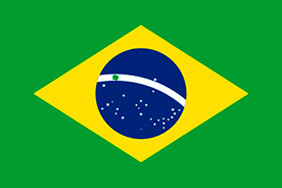Confira a agenda de eventos nacionais e internacionais com a participação do time Biofílica Ambipar no primeiro trimestre.

O ano da descarbonização começou, e a partir em março, a equipe Biofílica Ambipar estará presente nos eventos mais importantes do mercado, apresentando nossos projetos de carbono e contribuindo com a nossa expertise.
Confira os eventos que participaremos:
O maior evento de Certificados de Energia Renovável do país terá como patrocinadora a nossa parceira GoNetZero, plataforma de soluções para descarbonização, onde é possível encontrar créditos de carbono provenientes do nosso Projeto REDD+ RESEX Jacundá.
[divider height=”30″ style=”default” line=”default” color=”” themecolor=”0″]
A IETA (International Emissions Trading Association) é uma associação de organizações que buscam desenvolver o mercado íntegro de carbono. A Biofílica Ambipar é a primeira empresa brasileira membro da associação. O objetivo do webinar é reunir e compartilhar perspectivas do mercado da América Latina.
[divider height=”30″ style=”default” line=”default” color=”” themecolor=”0″]
Esse tradicional evento do mercado de carbono americano, em sua 20ª edição, reúne profissionais de todo o mundo para trocar experiências, colaborar e ampliar o network.
[divider height=”30″ style=”default” line=”default” color=”” themecolor=”0″]
Organizado pela Environmental Finance, um dos mais importantes veículos de comunicação com ênfase em mercados de ativos ambientais, o Natural Capital Investment 2023, discutirá os desafios e oportunidades do mercado de carbono, levando em consideração sua importância e complexidade.
[divider height=”30″ style=”default” line=”default” color=”” themecolor=”0″]
O ECS 2023 reunirá os principais especialistas do setor público e privado de todo o mundo para analisar e discutir o desenvolvimento e desafio atuais do mercado de carbono para avançar nas ações para conter o avanço das mudanças climáticas por meio das políticas net zero.
[divider height=”30″ style=”default” line=”default” color=”” themecolor=”0″]
Nós, que sempre participamos ativamente dos debates que envolvem o mercado voluntário de carbono, estamos certos que a participação nesses e em próximos eventos enriquecerá nossa experiência e trajetória em uma troca enriquecedora com outras organizações preocupadas com o desenvolvimento sustentável do planeta.






















